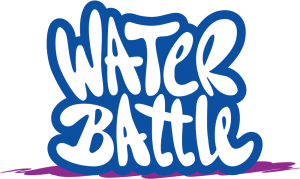as a tool to influence consumer
behaviour
Sometimes water companies find the quest to change household consumption behaviour overwhelming but this should not be the case. Understanding the psychology behind behavioural change will go a long way to help in strategy formulation and decision-making. In this article, we provide a simplified psychological approach a water utility/company can adopt as they take steps to help households change their water-consumption patterns, using gamification.
Admittedly, it is difficult to decide on which proposition to go for when you study the literature on behavioural-change psychology.
The Fogg Behavioural Change Model provides a simple and straightforward approach to how behavioural change happens. Gamification products aimed at behavioural change must intentionally think about the propositions of Fogg’s model when developing a solution to cause behavioural change.
The Fogg Behavioral Change Model suggests that 3 elements must converge at the same point to elicit a behavior. The elements are;
- Motivation
- Ability
- Prompt
Motivation
Fogg’s model suggests that for anybody to engage in any behavioral form, there must be a reason for action. With this in mind, all gamification tools for behavioural change in household water consumption must answer the following questions:
- Are there existing motivations for a household to change its water consumption behavior? When developing a gamification tool for households, one needs to understand the existing motivations. Note that the gamification tool must take full advantage of existing motivations, whilst creating new ones.
- If the answer to the above questions is yes, then how can a gamification tool use these motivations to inspire behavioral change?
- If no, how can a gamification tool create the needed motivation in a fun way?
From the above, the crucial question a water utility should ask itself is, does the design of the gamification tool we are considering consider the above questions? The next aspect of the model Fogg draws attention to is Ability.
Ability
This is another important aspect of the behavioral change equation. The interest here is to determine whether households are in the position to make the expected adjustments to their consumption behavior.
For instance, are families in the position to;
- turn taps off when brushing their teeth
- reduce long showering times.
A gamification solution must consider the realities in the target households during product development. For example, if your gamification product targets an area with serious water supply issues, then you must investigate the existing psychology of the households in that area. In essence, a tool for an area with serious water supply issues cannot be the same as one for those without water supply problems. As a water company, you must make sure the tool you go for fits the realities of your operational area.
The third and final aspect of the Fogg model is captured as the ‘Prompt’
Prompt
Fogg’s model posits that there should a trigger that leads to behavioral change. This is crucial for gamification tools because behavioral change takes time. Therefore intermittent triggers are needed to keep users engaged over time. This is how a water company can ensure the idea of good water conservation stays top of mind for households. It is also what’s needed to achieve behavioural change.
Generally, there are little to no samples of gamification solutions that incorporate the correct psychological elements in their development. An example of a gamification tool that has all three aspects highlighted in Fogg’s model is the Water Battle. This gamification solution aims to change household water-consumption behaviour.
Short (video) intro to Water Battle, an example of a serious game for a water conservation project
Would you like to know more about the Water Battle? Please feel free to contact us!


